The period before the end of the tax year is an important time to review your affairs with your accountant. There’s still time to plan, and make the most of allowances, ahead of your new tax return being issued after the 5 April 2023.
Here, in the second of our year-end tax planning reviews, we take a look at the changes to income tax rates and allowances announced in the 2022 Autumn Statement and Welsh and Scottish budgets and how they may affect you.*
2. Income tax rates and allowances
Key points:
-
- Personal allowance (PA): frozen at £12,570 until 5 April 2028 across the UK
- Basic rate band: is frozen at £37,700 for the same period (England, Wales and Northern Ireland). This means that the point at which someone with the standard PA starts to pay higher rate tax continues to be £50,270 until 2028
- Additional rate threshold (top rate threshold in Scotland): falls from £150,000 to £125,140 from 6 April 2023. Note too, that £125,140 is the figure at which all PA is lost (see below)
- No change to tax rates: in England, Wales and Northern Ireland.
Year to 5 April 2023
BAND INCOME RATE
Basic rate £12,571 to £50,270 20%
Higher rate* £50,271 to £150,000 40%
Additional rate* Above £150,000 45%
* Note that the additional rate threshold falls from 6 April 2023.
Wales and Scotland
Although Wales is able to set certain tax rates, the position for Welsh taxpayers in 2023/24 is expected to be the same as for English and Northern Irish taxpayers.
-
- In its latest Budget, the Welsh government reiterated that it will not increase the Welsh rate of income tax ‘for at least as long as the impact of coronavirus lasts’.
The position is different in Scotland, where the December 2022 Budget announced:
-
- Change in the top two income tax rates from 6 April 2023, meaning that the Scottish higher rate thus rises to 42%, and the top rate to 47%
- The top rate threshold will fall to £125,140 from the same date.
BAND INCOME 22/23 22/24
Starter £12,571 to £14,732 19% 19%
Basic £14,733 to £25,688 20% 20%
Intermediate £25,689 to £43,662 21% 21%
Higher £43,663 to £150,000/£125,140* 41% 42%
Top Above £150,000/£125,140* 46% 46%
* Note that the top rate threshold falls from 6 April 2023.
Impact of recent announcements
Much has been made of these changes representing a ‘stealth’ tax, because as wages rise, a bigger slice of income falls to be taxed. This will be particularly noticeable in a time of inflation. Freezing the PA and basic rate band, for example, will push more people into the higher rate tax band. There will be a similar effect in Scotland, where the tax burden for some individuals is already higher than for equivalent earners elsewhere in the UK. And for Scottish taxpayers, it is also important to factor in the increase in the top two rates of tax, as well.
Lowering the additional rate (top rate in Scotland) threshold will significantly increase the tax take from those on higher incomes. It is expected to bring something approaching a quarter of a million more taxpayers into additional rate tax from 2023/24.
Last-chance opportunities
Where income is expected to be between £125,140 and £150,000 in 2023/24, bringing income into 2022/23 could mean the difference between being taxed at 40% in 2022/23, rather than being taxed at 45% in 2023/24; or between 41% and 47% in Scotland. Scottish taxpayers may also want to accelerate income to reduce the impact of the 1% rise to both the higher and top rates of income tax.
There are a variety of ways that this may be done. Speak to one of our Private Client Tax experts here at Newby Castleman to review your circumstances.
Getting the best out of the personal allowance
Everyone has a PA. Look, wherever possible, to use the PAs available in your household. Now that the PA has been frozen, planning to avoid it being wasted assumes new importance.
The standard PA is £12,570 throughout the UK. It can be higher if you are eligible for the Blind Person’s Allowance; or have an income less than the PA, and are eligible to make a transfer of what is called the Marriage Allowance to your spouse.
You start to lose the PA if you have what is called ‘adjusted net income’ over £100,000. Adjusted net income is, broadly speaking, total taxable income before personal allowances, but after some deductions such as Gift Aid. The PA is clawed back by £1 for every £2 of adjusted net income over £100,000. When income is £125,140 or more, all PA is lost.
Planning potential: keeping the personal allowance
If you are in the £100,000 – £125,140 income bracket, a plan to keep your taxable income below £100,000 could help you keep the PA. Ideas to follow up with your accountant include:
> For married couples, there may be opportunities to redistribute income where one spouse is in a lower tax band, or transfer income-producing assets
> If you are in business with your spouse there can be further planning potential. For example, if you are in a partnership, it may be possible to review the profit-sharing ratio. If you are self-employed, increasing wages for a spouse who works in the business is another possibility.
Here to help
These are areas in which it is important to make sure that arrangements are fully compliant with relevant legislation. We are happy to advise further. Do please talk to us prior to action.
*In these briefings, we use the rates and allowances for 2022/23. Please note that throughout, the term spouse includes a registered civil partner.
